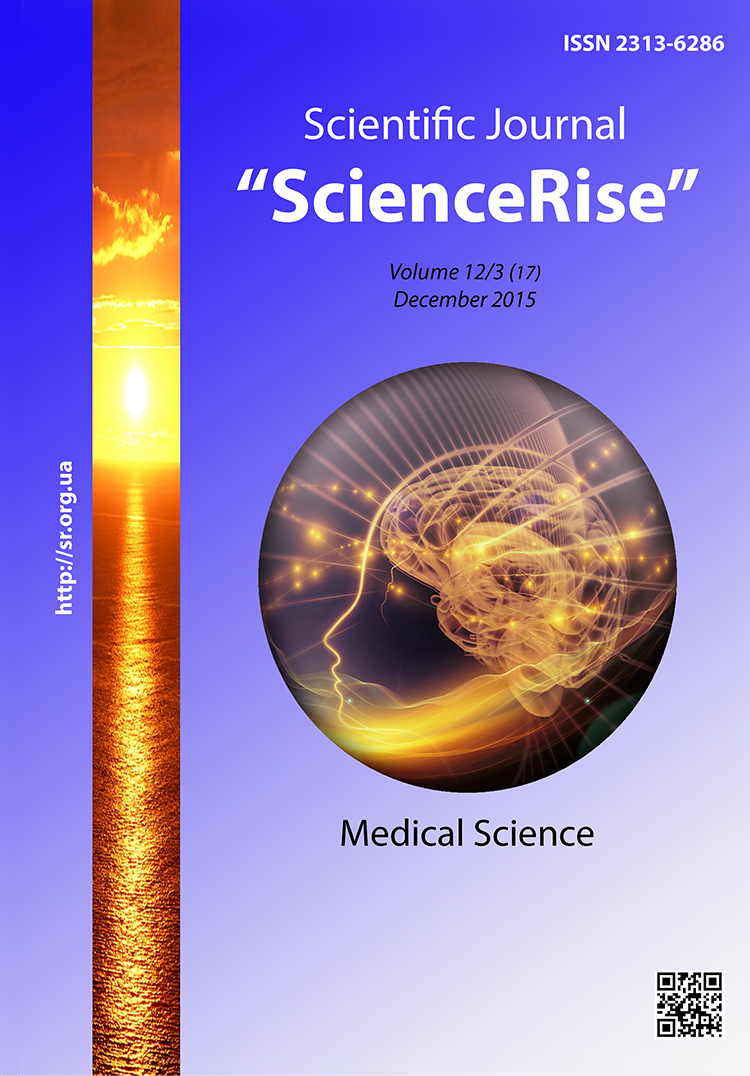Магнітно-резонансна томографія шийного відділу хребта у дітей молодшого та дошкільного віку в нормі та при травмі
DOI:
https://doi.org/10.15587/2313-8416.2015.56937Ключові слова:
шийний відділ хребта, МРТ, норма, травма, діти молодшого віку, діти дошкільного вікуАнотація
В роботі приведені дані магнітно-резонансної томографії шийного відділу хребта (ШВХ) у дітей віком до 7 років. На основі даних рентгенографії пацієнтів розділено на групи тяжкості.
Визначено показники нормально МР-картини ШВХ та проведено метричні дані ШВХ у віковому аспекті.
Проведено дослідження ШВХ у дітей з травмою та визначено різні МР-показники та метричні дані, які вказують на травму та ступінь її тяжкості
Посилання
Spuzjak, M. I., Kolomijchenko, Ju. A., Sharmazanova, O. P. et. al (2011). Osoblyvosti rentgenologichnoi' kartyny rotacijnogo pidvyvyhu atlanta ta jogo uskladnen' u ditej vikom vid 3 do 16 rokiv. Ukr. radiologichn. zhurn., 1, 5–14.
Kolomijchenko, Ju. A. (2010). Pologova travma (ponjattja, epidemiologija, klasyfikacija poshkodzhen' hrebta, klinika ta diagnostyka). Probl. suchasnoi' med. nauky ta osvity, 4, 93–96.
Agejkin, V. A. (2003). Rodovye travmy. Medicinskij nauchnyj i uchebno-metodicheskij zhurnal, 15, 3–22.
Koval', G. Ju., Grabovec'kyj, S. A., Bondar, G. M., Pojda, Z. S. (2005). Pojednani porushennja rozvytku osnovy cherepa ta shyjnyh hrebciv. Promeneva diagnostyka, promeneva terapija, 23–29.
Spuzjak, M. I., Sharmazanova, O. P., Voron'zhev, I. O. (2003). Pologova travma shyjnogo viddilu hrebta u novonarodzhenyh za rentgenologichnymy danymy. Kharkiv: Krokus, 16.
Shabalova, N. P. (Ed.) (2003). Pediatrija. Sankt-Petrburg: SpecLit, 893.
Trufanova, G. E. (Ed.) (2007). Povrezhdenija pozvonochnika i spinnogo mozga. Moscow: "GJeOTAR-Media", 416.
Ratner, A. Ju. (2005). Nevrologija novorozhdennyh: Ostryj period i pozdnie oslozhnenija. Moscow: BINOM. Laboratorija znanij, 368.
Ajlamazjan, Je. K., Karpova, I. T., Zajnulina, M. S. (2015). Akusherstvo. Moscow: GJeOTAR-Media, 704.
Spuzjak, M. I., Kolomijchenko, Ju. A., Sharmazanova, O. P. et. al (2009). MRT-kartyna verhn'oshyjnogo viddilu hrebta u ditej molodshogo ta doshkil'nogo viku v normi. Ukrai'ns'kyj radiologichnyj zhurnal, 17 (2), 131–139.
Spuzjak, M. I., Voron'zhev, I. O., Kramnyj, I. O., Kolomijchenko, Ju. A., Sharmazanova, O. P., Shapovalova, V. V., Loboda, I. S. (2007). Pat. 23597 Ukrai'ny, MPK (2006) G03B 42/02. Sposib diagnostyky stupenja tjazhkosti rotacijnogo pidvyvyhu atlanta (S1) pry pologovij travmi u donoshenyh novonarodzhenyh. № u200701119; zajav. 05.02.2007 r.; opubl. 25.05.2007 r., № 7.
##submission.downloads##
Опубліковано
Номер
Розділ
Ліцензія
Авторське право (c) 2015 Юрій Анатолійович Коломійченко

Ця робота ліцензується відповідно до Creative Commons Attribution 4.0 International License.
Наше видання використовує положення про авторські права Creative Commons CC BY для журналів відкритого доступу.
Автори, які публікуються у цьому журналі, погоджуються з наступними умовами:
1. Автори залишають за собою право на авторство своєї роботи та передають журналу право першої публікації цієї роботи на умовах ліцензії Creative Commons CC BY, котра дозволяє іншим особам вільно розповсюджувати опубліковану роботу з обов'язковим посиланням на авторів оригінальної роботи та першу публікацію роботи у цьому журналі.
2. Автори мають право укладати самостійні додаткові угоди щодо неексклюзивного розповсюдження роботи у тому вигляді, в якому вона була опублікована цим журналом (наприклад, розміщувати роботу в електронному сховищі установи або публікувати у складі монографії), за умови збереження посилання на першу публікацію роботи у цьому журналі.

